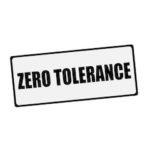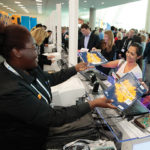“You Are Here” was the tagline that appeared throughout ASAE’s 2013 Annual Meeting & Exposition at Atlanta’s Georgia World Congress Center on Aug. 3–6 — a clear-eyed reality check that was echoed in the opening and closing general sessions, both of which in their own way dealt with the dangers of mistaken assumptions.
Susan Cain, bestselling author of Quiet: The Power of Introverts in a World That Can’t Stop Talking, told attendees during the opening general session that she spent seven years working as a lawyer on Wall Street out of the belief that she had to be “this gregarious, outgoing person.” In fact, Cain is more of an introvert — which doesn’t mean shy or socially inept, she said, but simply that it takes energy for her to interact with other people, as opposed to extroverts, who are energized by being around other people. “I came to think it is a mistake that we are all making,” Cain said, “in our personal and professionals lives.”
Especially in our professional lives, Cain said, where the business world tends to undervalue introverts and to embrace extroverts, prizing group brainstorming and other team-based activities, and leaders who are bold and charming. But innovation also requires solitude, and the person with the loudest voice isn’t always the best leader — and introverts make up one-third to one-half of the population. “We are missing out,” Cain said, “on some of the best ideas and the best leaders in our organizations.” She added: “I am calling for a world of yin and yang, where introverts and extroverts appreciate and are there for each other, because we need both.”
At ASAE’s closing general session, Dan Heath addressed a different problem – also born of misperception — that plagues people and organizations: poor decision making. “Over 65,000 tattoos were reversed last year,” said Heath, whose latest book, written with his brother Chip, is Decisive: How to Make Better Choices in Life and Work. “Every one of them seemed like a good idea at the time.”
Why? Because we’re prone to confirmation bias and a host of other intellectually and emotionally clouding conditions. Heath offered four solutions: “widen your options” (don’t approach every decision as yes/no or either/or); “reality-test your assumptions” (conduct real-world research); “attain some distance before deciding” (don’t make things personal); and “prepare to be wrong” (don’t approach your decision as having to be infallible and irreversible). “Often in life we think we’re looking for truth,” Heath said, “when we’re really looking for reassurance.”
ASAE itself seems to have made some good decisions around this year’s Annual Meeting, drawing more than 5,400 attendees — including nearly 3,000 association executives, the highest number since 2008. “Being here,” President and CEO John H. Graham IV, CAE, told attendees during the opening general session, “you’re investing in your association and you’re investing in associations as an industry.”



